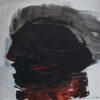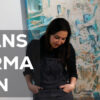Experts shed light on Modigliani ‘s murky market with new research project
Fakes and squabbles have long-obscured scholarship, but a catalogue raisonné may now be in the pipeline
respected experts has founded a research project and a long-promised catalogue raisonné is on the cards.
On 21 June at Sotheby’s in London, the artist’s Jeanne Hébuterne (au foulard) (1919) sold for a strong £۳۴٫۴m hammer (£۳۸٫۵m with fees) at Sotheby’s—well over its £۲۸m-plus estimate.
In 2015, works by Modigliani sold for a total $251m, according to Artprice. Prices were driven up by Reclining Nude (1917-18), which sold for $170.4m to the Chinese billionaire Liu Yiqian in November. Meanwhile, London’s Tate Modern has a major survey of the artist planned between 22 November 2017 and 2 April 2018.
But this is a market in which considerable uncertainty remains over the authenticity of some works, one that is bedevilled by fakes, by a dearth of reliable expertise and by squabbles between scholars.
No fewer than five authors have penned catalogues raisonnés of the paintings, but only one is accepted by most auction houses: that of Ambrogio Ceroni, last updated in 1972. But it has its gaps, partly because Ceroni listed only what he had seen, and he never went to the US.
Now, a new non-profit organisation, the Modigliani Project, has been founded by the respected scholar Kenneth Wayne, who has been studying the artist for 30 years. He has joined up with an impressive group of French curators and conservators, including Brigitte Léal, the deputy director of the Centre Pompidou; Sophie Krebs, the chief curator of the Musée d’art moderne de la Ville de Paris; and Cécile Girardeau, a curator at the Musée de l’Orangerie, Paris. The project leader is Michel Menu, the chief conservator of the Centre de recherche et de restauration des musées de France, Paris.
For now, their focus is to clarify Modigliani’s technique and working methods through scientific analysis, firstly examining works in French public collections, then extending to those in other countries.
Wayne says that there will be “further developments and announcements” before the end of the year. “Let’s just say that an exciting first step has been taken, with further news to come,” he says.
As well as a number of suspected fakes on the market (more in drawings than in paintings, says Wayne), complicating the field has been an epic battle between two specialists, Christian Parisot and Marc Restellini, which aired publicly for more than a decade through the 2000s.
Now the Paris-based Institut Restellini has announced that it will publish a catalogue raisonné for paintings at the end of this year, with drawings to follow. The institute was founded by Restellini, an art historian who since 1997 had been working under the auspices of, and financed by, the Wildenstein Institute, on a Modigliani catalogue. That relationship came to an end in 2015.
His catalogue raisonné will be online only, with paid access. According to the researcher Marie-Christine Decroocq, the new catalogue will have around 100 more works than the 337 in Ceroni. No more details are currently available.
Decroocq said that the publication is being financed by fees charged by Restellini for his expertise and for issuing certificates of authenticity. The research is being carried out in collaboration with the Fine Arts Expert Institute, a body based in the Geneva freeport that belongs to the Swiss art shipping and storage “king” Yves Bouvier.
How much validity will the market give to the new online publication? An auction house specialist says: “We will have to wait and see exactly what the catalogue consists of before judging it.”







